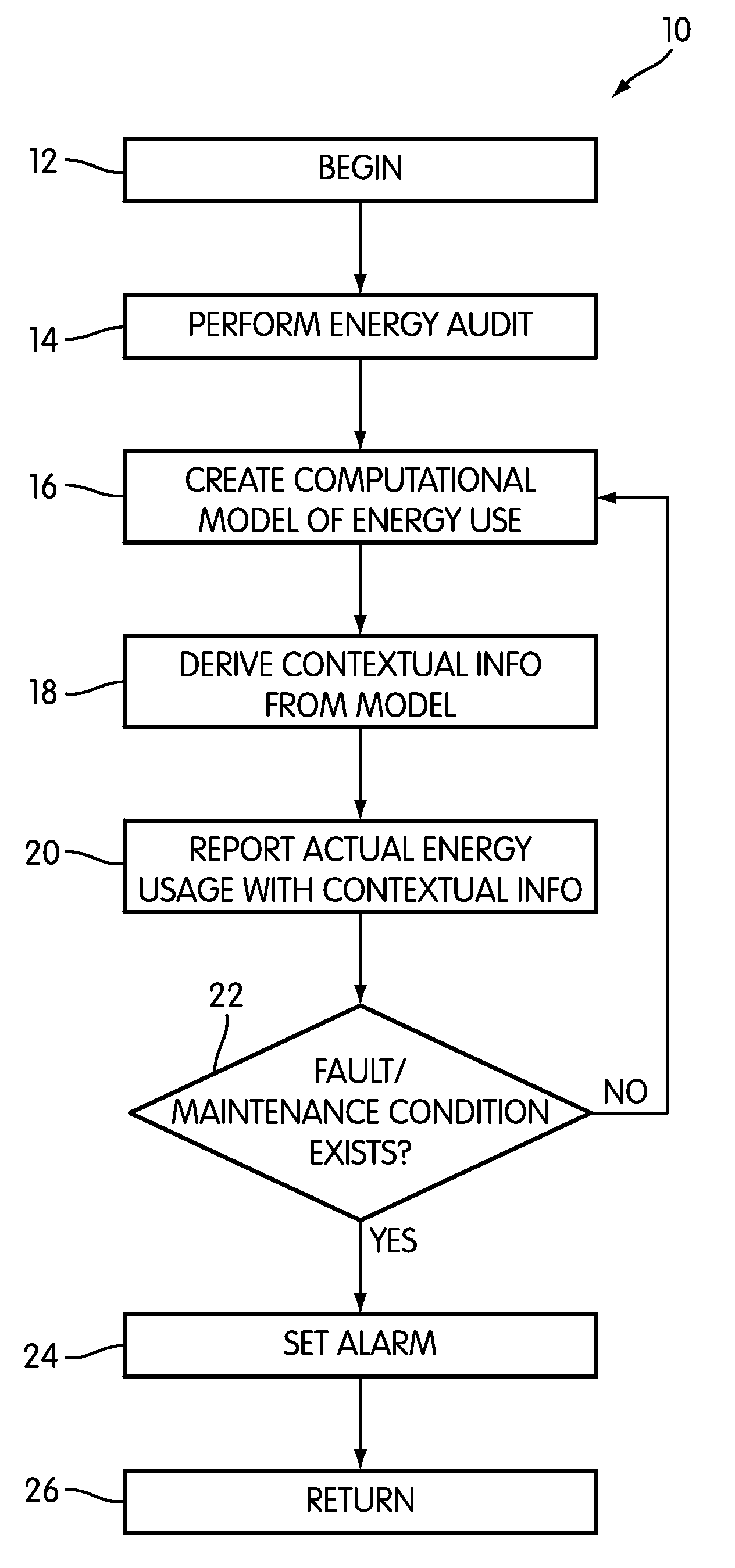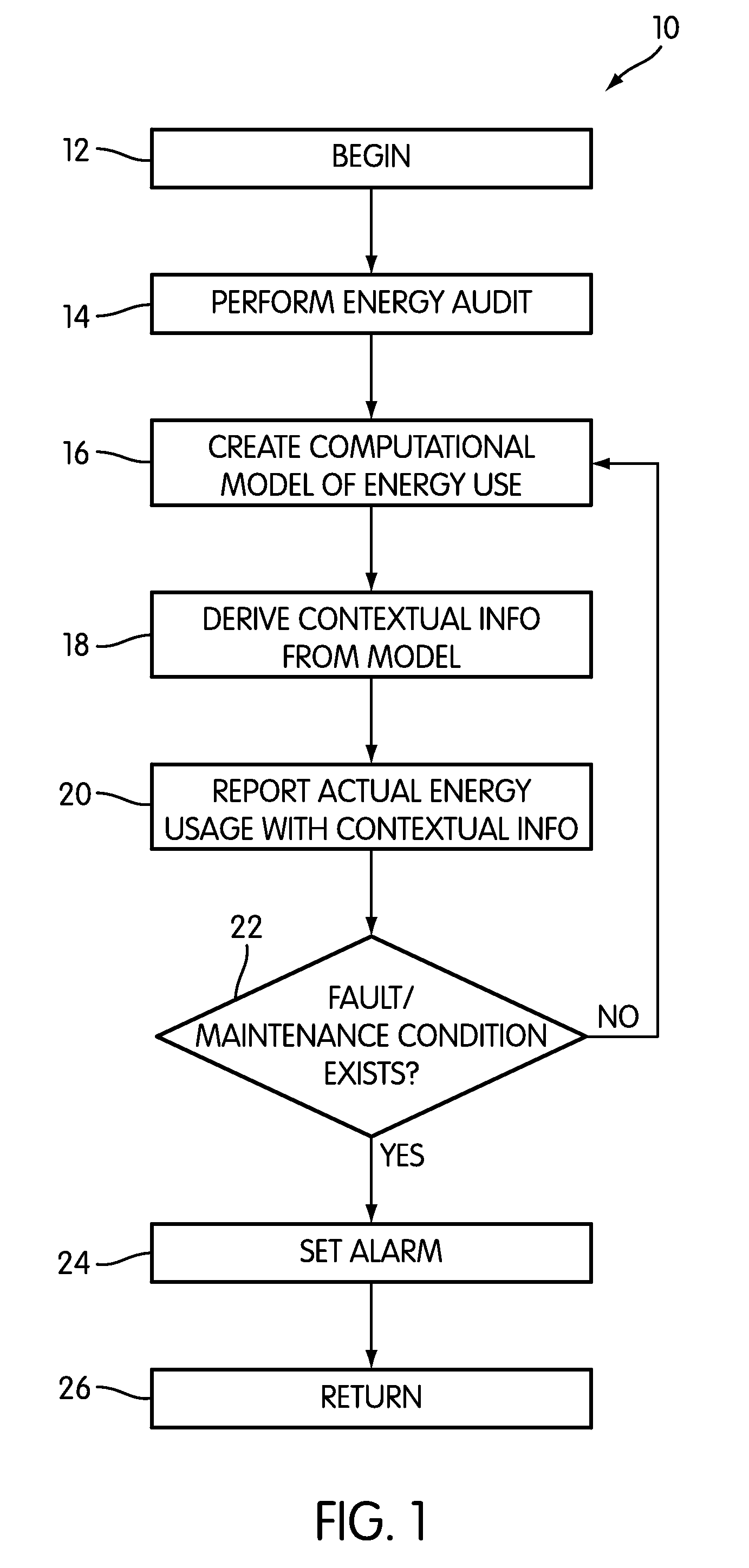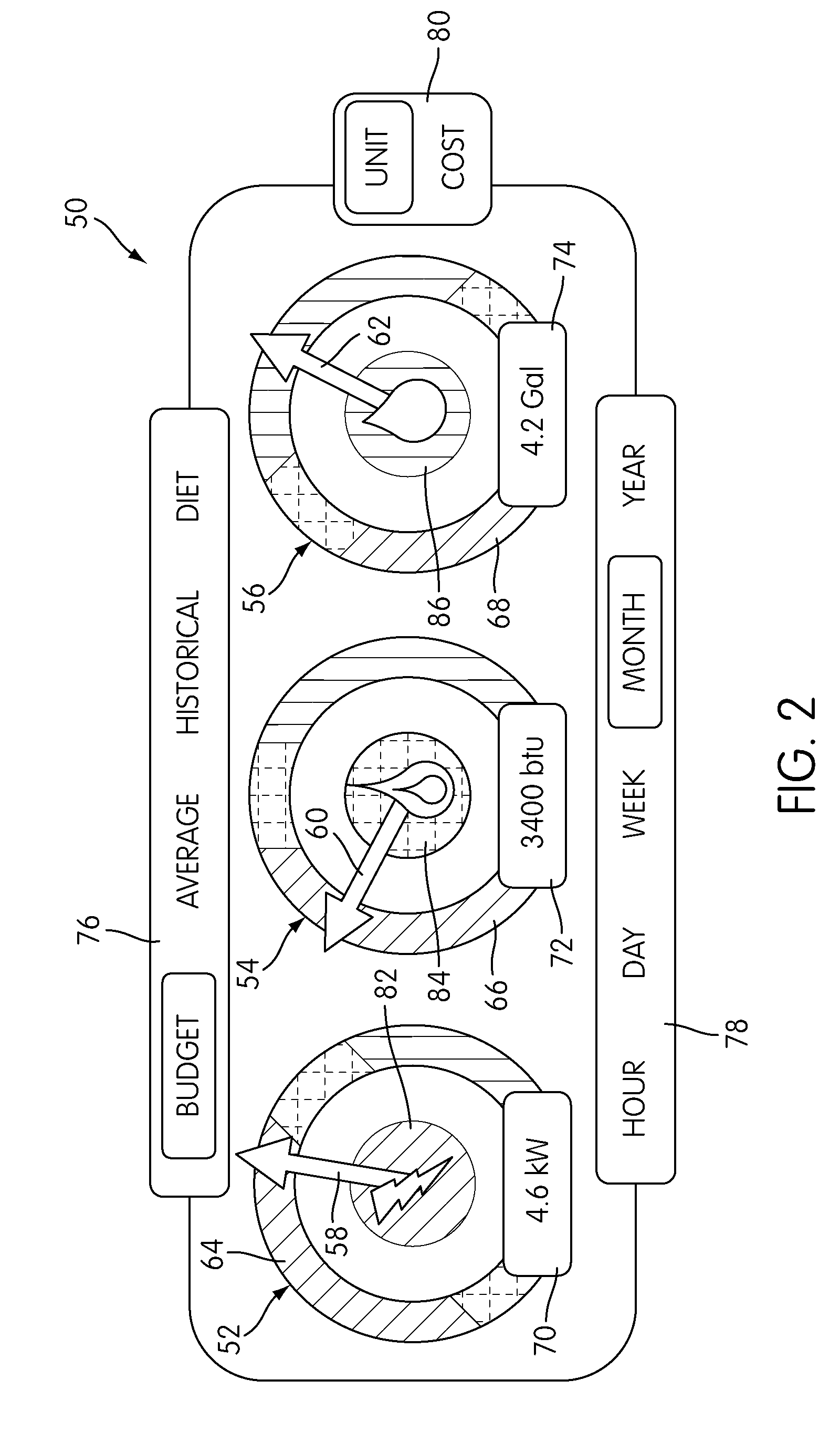Building Energy Usage Auditing, Reporting, and Visualization
a technology for building energy consumption and auditing, applied in the field of building science, can solve the problems of occupants having no control over weather conditions, requiring far more detailed information for conservation and energy efficiency, and the amount of energy that any particular building uses,
- Summary
- Abstract
- Description
- Claims
- Application Information
AI Technical Summary
Problems solved by technology
Method used
Image
Examples
Embodiment Construction
[0018]FIG. 1 is a high-level flow diagram of a method, generally indicated at 10, of reporting actual and contextual information on a building or structure's energy usage. It should be understood that method 10, and other methods and systems according to embodiments of the invention, may be applied to any form of occupied building or structure, including residential housing and commercial buildings. Additionally, the terms “building” and “structure” may be used interchangeably in the following description. Although the following description refers to the use of method 10 on an entire building, in some embodiments, and under certain circumstances, the tasks of method 10 may be performed on only a portion of a building. Additionally, although the term “energy” will be used in portions of the following description to describe the methods and systems and that which is being measured and reported, that term should be construed broadly to refer to any consumable commodity used by a buildi...
PUM
 Login to View More
Login to View More Abstract
Description
Claims
Application Information
 Login to View More
Login to View More - R&D
- Intellectual Property
- Life Sciences
- Materials
- Tech Scout
- Unparalleled Data Quality
- Higher Quality Content
- 60% Fewer Hallucinations
Browse by: Latest US Patents, China's latest patents, Technical Efficacy Thesaurus, Application Domain, Technology Topic, Popular Technical Reports.
© 2025 PatSnap. All rights reserved.Legal|Privacy policy|Modern Slavery Act Transparency Statement|Sitemap|About US| Contact US: help@patsnap.com



